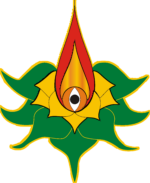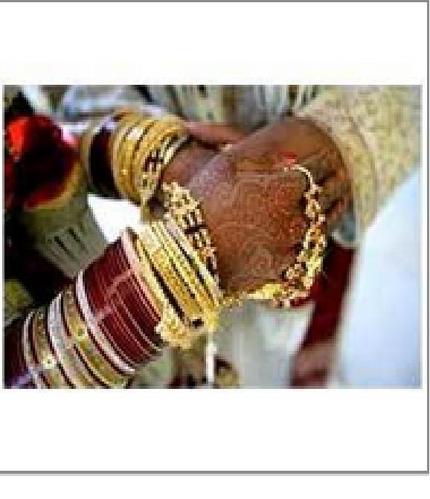|
Among the many announcements made by Prime Minister Modi, in his August 15, 2020 speech, from the ramparts of the Red Fort, the one regarding the Government’s determination to raise the “age of marriage” for girls was rather worrisome. He announced with great pride that, “We have set up a committee to deliberate on the minimum age for marriage of our daughters…We will take appropriate decision after the committee submits its report.” In this article Sankrant Sanu challenges Modi government’s wisdom and needless enthusiasm on this issue and offers cogent reasons why the move is ill advised. We invite readers to send their views on this issue.— Editor |
India’s high marriage age victimizes tribal and rural communities, it shouldn’t raise the age of marriage further.The government, a few months ago announce a “review” panel for deciding the legal age of marriage in India, which is already at a very high 18 for girls and 21 for boys. 146 countries allow marriage under 18 with parental consent. Only one country, Rwanda, has a marriage age set as high as India with no exception for parental consent. Even England and Wales, where the colonial attacks on “child marriage” in India came from, have a legal age of 16 for marriage. There is speculation that the government of India may now further raise the age of marriage. Why this tearing need to be like Rwanda?
The push to have a state mandated age of marriage and then to raise it is driven by two belief systems:
- Parents and society are not capable of making proper decisions about their children and the state has to civilize and fix them. Parents and children cannot be trusted to determine when the children marry.
- There is only one model by which society must work, and this model must be pushed by the state.
What is this model? It is the model that comes from certain dogmas that has developed in India about “modern” societies.
Here is a stereotypical recital of Model 1.
Model 1: Seema will grow up and go to school. She will go through 12 years of education. Then she will go to college, after which she will get a job. It is then she should decide on marriage. Marriage is an individual choice. One must choose one’s partner oneself and then a couple must build their own life and live as a nuclear family. This is what Seema must do.
Now most “modern” readers in India reading this will agree on this model. But is this the only model?
Model 2: Ramiya is a girl from a village. Her family work as farmers. She went for some years of school and while at home, she learnt the skills of taking care of cattle, milking the cows, and taking care of the family. She is now sixteen and men in the village have started eying her. She has learnt all she needs to, to be a good wife for a farmer. Her parents invite a boy and his family from a neighboring village. Shyly she looks at Vinod from behind the curtain as he arrives. He doesn’t see her, but it is all decided. She is married, and goes to live with Vinod and his family, and becomes part of the household. She is loved in the new home and she gives birth to a daughter when she is 17 and Vinod is 20. The daughter is raised by the family and grandparents and uncles and aunts in the home. Ramiya is happy playing with her daughter and being part of the household.
Now I am not advocating Model 2. The question I am raising is this. Is it such an “evil” thing that it needs to be outlawed by the government. Is Model 1 the only model in which society must operate and no freedom should be given by the state in society for people to choose how they want to live? Let us see what happens next.
In the village there is an NGO operating with foreign funds. It notices the new child and bride and makes some enquiries. It tells the local police which is reluctant to do anything. Even the policeman had married at the same age. The NGO then calls up the Collector and says they will make a fuss in the media if no action is taken. The police sweeps down and arrests Vinod. He is dragged from the house while Ramiya is crying and begging them to let the father of her child go. She is flung aside and Vinod arrested. He is sentenced under the draconian POCSO act for rape and sentenced to 10 years in jail. Ramiya and her life is destroyed. Vinod’s life is destroyed. The NGO reports their excellent performance to their foreign donors.
Fanciful tale? Look at this news item. https://www.hindustantimes.com/india/tradition-vs-law-why-kerala-tribals-are-against-an-anti-child-abuse-act/story-fkvjZcM02v9WSkB292PoeI.html
“When Vinod brought home his 17-year-old wife last September, little did he know he was committing a crime that would land him in jail for months. A 21-year-old Paniya tribal youth from north Kerala’s Pachilakkad, Vinod was simply following community customs dating back centuries…But two days later, he was picked up by police and charged under India’s tough new child abuse law. He hadn’t heard of the 2012 Protection of Children from Sexual Offences Act (Pocso) before. He isn’t the only one. Last month, a tribal youth, Babu, was sentenced under Pocso to 10 years in prison for raping his underage wife in spite of the woman pleading before court to let him go. Dozens of young tribal men in Kerala’s Wayanad district have been charged under Pocso in the past three years but local residents say the boys were merely following tradition that doesn’t recognise modern definitions of adulthood.”
The Indian State has taken on the job of the civilizing mission, the White Man’s Burden, now pushed by colonial bureaucrats and politicians where rural and tribal communities are targeted and jailed simply for following their ways. The news continues:
“The arrests have triggered mass protests. On April 11, hundreds of tribals walked to the special Pocso court in Wayanad town – a rally made conspicuous by the unusual absence of mainstream political leaders in election season.”
Hundreds of tribals protest this draconian interference in their life. The state is not there to provide them any services. They don’t need the police, they manage their own life. And no police would have helped if Ramiya had been kidnapped and raped by a local strongman after she turned 16. Yet the full power of the state is there to “fix” people from following their traditions.
And are these traditions really so bad or unusual? No, this kind of heavy-handed action would be unimaginable elsewhere. According to the United Nations, in 146 countries of the world, girls younger than 18 can marry with parental consent. In 52 countries even girls under 15 could marry with parental consent. In all but 4 states of the US, girls under 18 can marry with parental consent. In many US states, the minimum marriage age is 14-16 years, and in several states there is no minimum age of marriage with parental consent. Thus in 146 countries, Ramiya and Vinod could be living happily together; but in India Vinod is a statuary criminal and rapist for a consensual marriage to a loving wife, and such a threat to society that he must be locked up in jail for a decade. This is the madness of the Indian state.
India already has one of the highest ages of marriage in the world with 18 for girls and 21 for boys, with no exceptions for parental consent. Apparently, unlike in 146 other countries, parents and teenagers in India have a special need to civilized by the state and be given no rights to make their own choices. Urban bureaucrats and ministers in this mai baap patriarchal state will decide how everyone will live.
But the madness of the Indian state doesn’t end here. Despite having one of the highest ages of marriage in the world, and oppressive laws which are out of touch with the people, the government of India is not satisfied. It is now proposing to further raise the marriage age to 21 for girls. Why? Because the government wants to “look good” on statistics such as maternal mortality rate (MMR) and it thinks that the route to doing this is even more draconian coercion in the lives of people. Human beings are not a statistic and there is considerable variation in how and when individuals mature. It is unlikely that even under foreign occupation, let alone a Hindu state, has the government instituted such a draconian interference in the life of people. The State in India never exercised such power or attempted such drastic social engineering. This is not “minimum governance.” It is “maximal oppression.”
So bureaucrats and politicians sitting in Delhi are looking to pass a law which will further criminalize innocent tribal and village youth. If the age is to be changed, why not ask the people who will be most affected? Why not do a survey in rural areas? Isn't that what representative democracy should be about—representing people rather than fixing them? But a government driven by technical bureaucrats wants to “look good” on paper statistics rather than caring about human beings.
India is a family-oriented society. If something has to be changed, where there are cases of immature girls running away without parental consent, one can raise the age of marriage to 18 or 21 without parental consent, while lower the age of marriage to 16 with parental consent as is true in 146 countries. The government should stop victimizing tribal and village youth marrying with parental consent according to their customs and this age should be uniform irrespective of religion.
The government must recognize that India has a large rural & tribal population which has lived with local wisdom for ages. Marriage age in India has been rising naturally, and it will continue to rise as the value of education is realised. This will happen naturally without making coercive laws. And if the govt really cares about MMR, it should stop facile steps like tinkering with the marriage age and throwing people in jail but step up to take responsibility for social services to expecting mothers including to strengthen the traditional midwife network with training.
At the same time, if the government raises the age of marriage, it should also at the same time allow that age of marriage to be 16 with parental consent.
Colonial shame about “child marriage” has driven India’s policies, where most countries of the world make these decision on local acceptability and traditions. India should stop running the state like a totalitarian autocracy with draconian interference and social engineering. It must allow tribal and rural people to have the freedom and dignity to live according to their customs unless there is an extreme need to intervene, not just to make statistics look good. It must also completely prohibit the application of POCSO to marriages by custom and specifically reserve it for heinous rape and sexual abuse. Let's not create situations for social unrest which are used by inimical forces to lead desperate tribals to take to arms against an insensitive colonial state.

